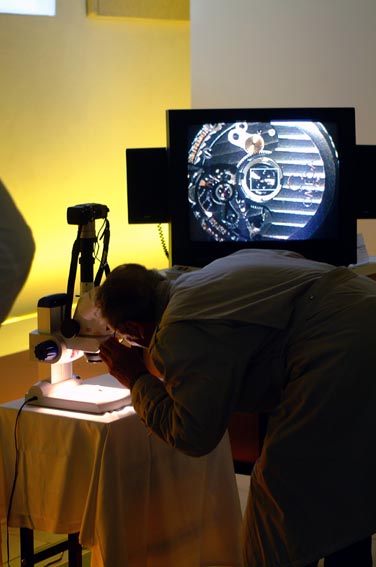Of Multi-Axis Tourbillons, Indicators - and our future watchmakers:
Impressions from the 'Die Presse Gala' in Vienna
January 22nd, 2005
The center
of the watch world - that's Switzerland, right? And with a significant
distance, then comes Germany, ok? Well, this is true at least for manufacturers,
and one is tempted to say also for exhibitions. For the latter, as we
have learned from the various reports on different internet watch enthusiasts
fora, there are now additionally Asia and the USA which are the
places to be. Really? The only ones? No, there is a little neutral
state, located now in the center of Europe, which is highly unsuspicient
when is comes to watches: Austria, to be more specific: Vienna! Despite
famous of being a reasonable place to satisfy epicurean desires, one
can, with a little bit of luck, attend one of the more interesting watch
exhibitions: The 'Die Presse Gala', organised by the reputable Austrian
newspaper 'Die Presse'. There is a person behind all this whom many
of us know: Mr Alexander Linz, famous watch journalist and moderator
on IWC's own watch forum.
Thanks to Mr Linz, I was able to get an invitation to the exhibition.
It was a fantastic event, well-organised and with an exciting variety
of watches, persons and entertainment. Here is my report:
Welcome
to my impressions about the
'Die Presse' Uhrengala 2004 at the Museum Quarter Vienna
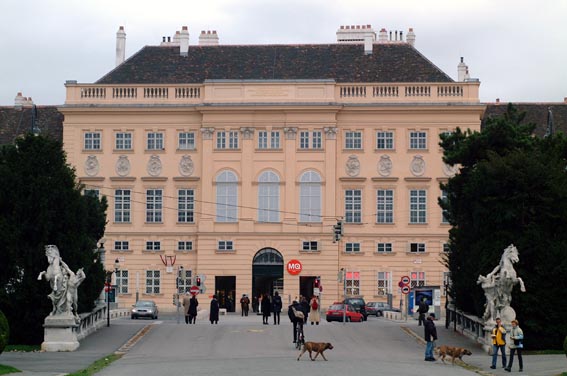
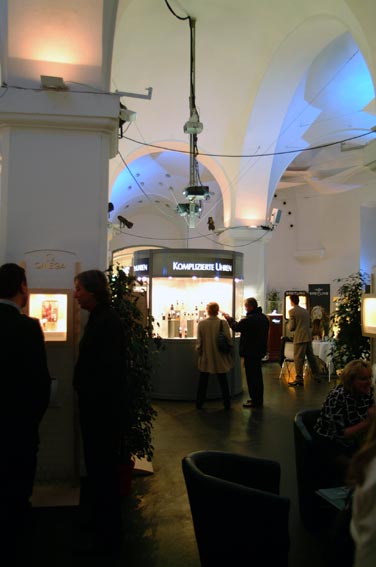
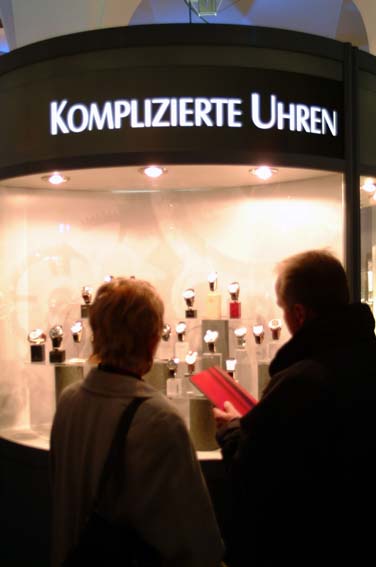
The purpose
of the 'Die Presse Gala' is to fire the interest of the Austrian audience
in fine watches and to given them a chance to vote for the 'watch of
the year in 4 different categories:
- Design and Trend
- Ladies' Watches
- Men's watches
- Complications
The contest entries were selected by the watch companies themselves
(what sometimes made me shake my head: there were simple GMT watches
or watches equipped with a rather mundane Valjoux 7751 to be found in
the complicated watch category...). The watches were publically presented
in November 2004 in the very nice ambience of the Museums Quarter Vienna,
and a few weeks later, the rather formal gala was held where the winners
were announced, and many of the international watch world 'celebrities'
met each other: a really familiar atmosphere! But let's begin with the
already exciting and fast start:
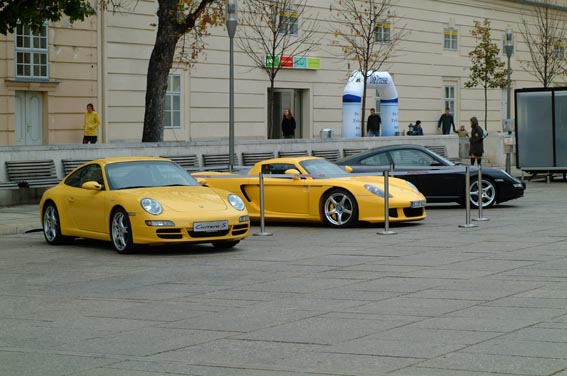
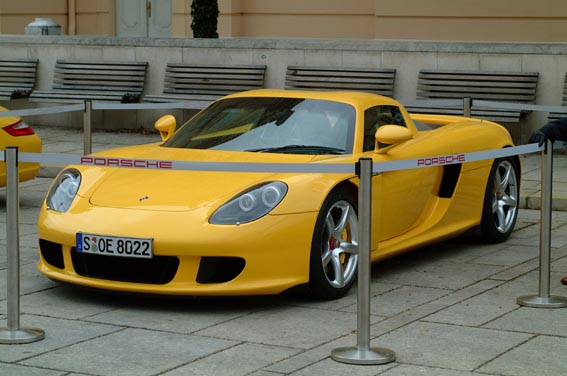
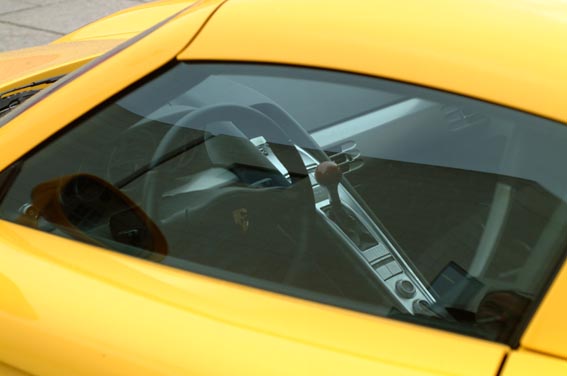
More importantly, at least in my opinion, was the presentation of the two watchmaking schools in Austria: The Wiener Uhrmacherlehrwerkstätte and the Uhrmacherschule Karlsstein. Both watchmakers schools dirigated their students to the public watch exhibition and brought along all the tools necessary to demonstrate their skillls to the intersted audience. What I did not know is that both schools are supported by a watch manufacturer part of the Swatch Group: The Wiener Uhrmacherlehrwerkstätte gets suppport from Omega, and the Karlsstein school from Glashütte Original. A very nice move for both companies to engage themselves in the education of future watchmakers and in the preservation of watchmaking skills.
The Vienna watchmaking school provided a very useful service for all Omega owners: They were invited by letters sent out beforehand to bring along their Omegas to the exhibition and have it there tested for precision, accuracy and water resistance - for free! The watchmaking students had a hard time in handling all the numerous requests - but also to explain what they are doing and what's behind these fancy graphs on the Witschi timing machines. They had to learn to argue and negotiate. This was a very fruitful experience for boith sides, studens and customers. I wittnessed a discussion between a Ferrari owner and a student about the allegedly 'exorbitant' costs of a service for an Omega Speedmaster. The student had to explain that a service is more than pouring some drops of oil into the movement and to check the water resistancy! It took quite a time, but then the guy got really interested and promised to send in his Speedmaster. A quick look at his watch immediately gave the explanation why he had no clue about a watch service: the Speedmaster was in a very alarming condition, and the chronograph did not work at all! With this excellent idea all parties involved in the watch business, manufacturers, retailers, watchmakers and also the customers, made a surplus. Furthermore, life-imaging of a running automatic movement made some people litterally crawling into the movement...
The Karlsstein school on the other hand chose to give a tour through the four years of watchmaking training. For each year, one student demonstrated what he/she learned. In Austria, there is lack of new blood which could be desperately used by the service departments. So the issue of their presentation was to attract future trainees. They brought along a fascinating variety of school watches and mechanisms, amongst them a desktop planetarium and a clock with a central tourbilllon. One of the most impressive demonstration of excellence was the life-skeletonisation of an Unitas pocket watch movement.
One thing you may want to know: Walter Lange, heir of the Lange watch dynasty and one of the most admired personalities on the internet watch community, got his watchmaking eductation in Karlsstein!
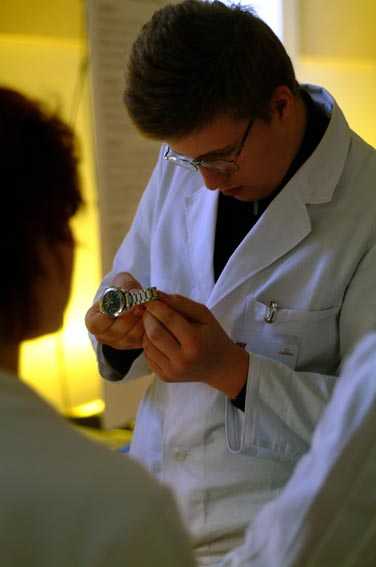
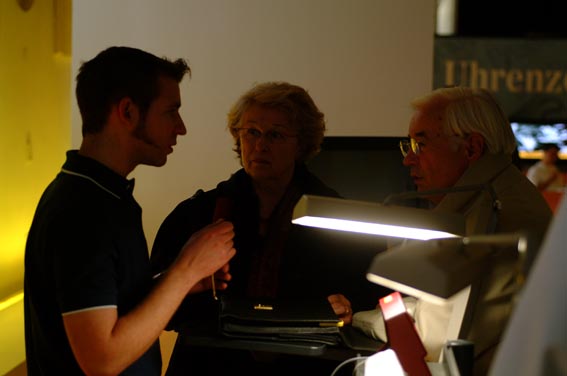
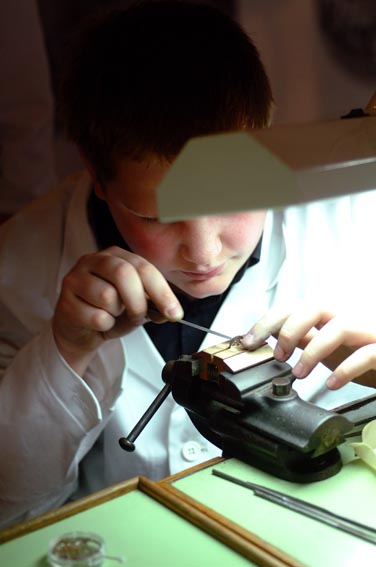
The Unitas movement gets naked! Please compare the raw movement (above), and then take a look at the result (below): what an amazing achievement!
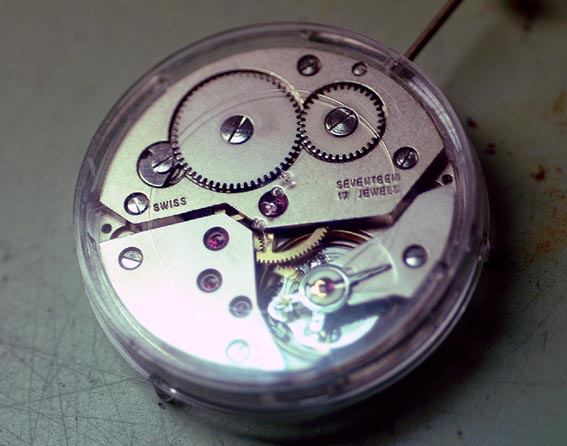
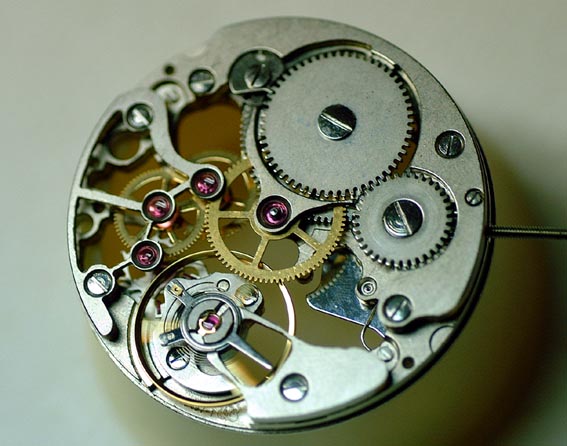
Omega
had a very nice idea to support the Vienna School: They installed a
both where glogg was sold. 1€/glass was donated to the Vienna watchmaking
school, and in the end 750€ could be collected (so the Constellation
glogg was my choice...;-)!)! Omega was even ready for a nice
surprise and doubled the amount up to 1500€!! Harald Rinder, chef
of the school happily announced that he is now able to buy a few Fréderic
Piguet movements to train his students on very fine, flat and more delicate
movements.
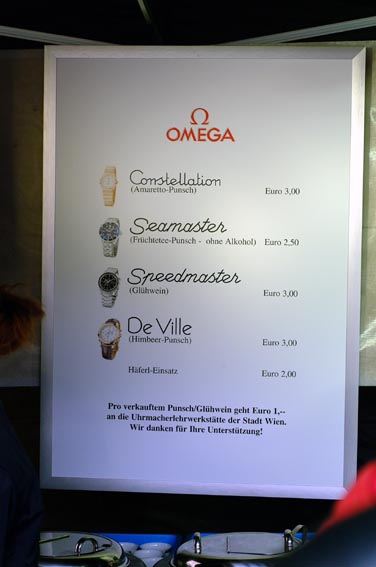
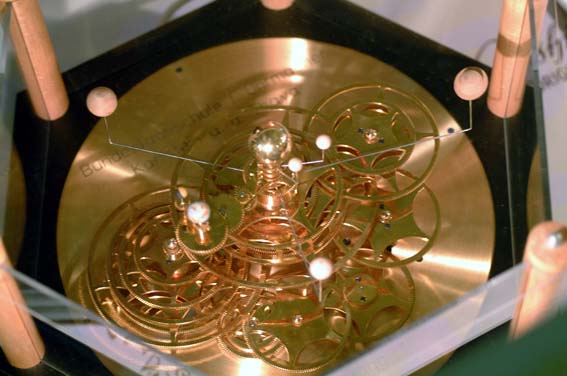
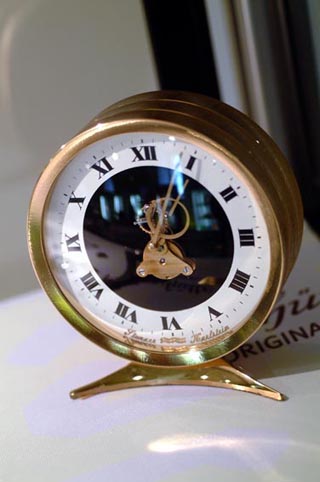
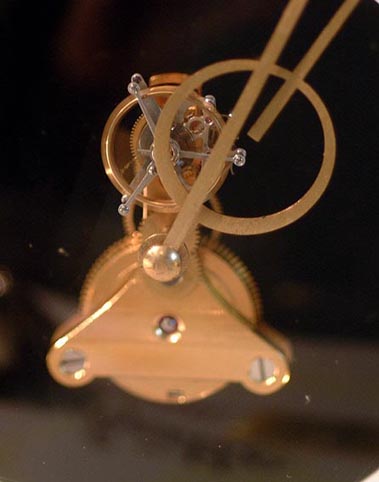
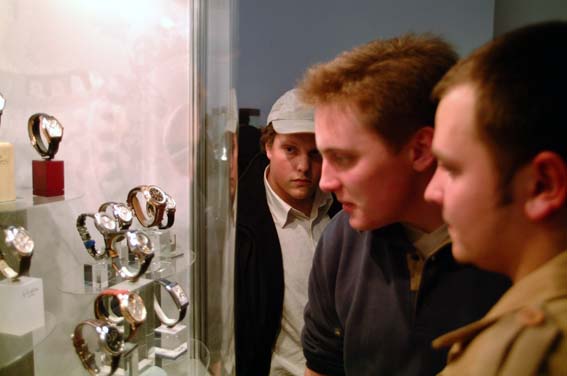
just follow me to...
